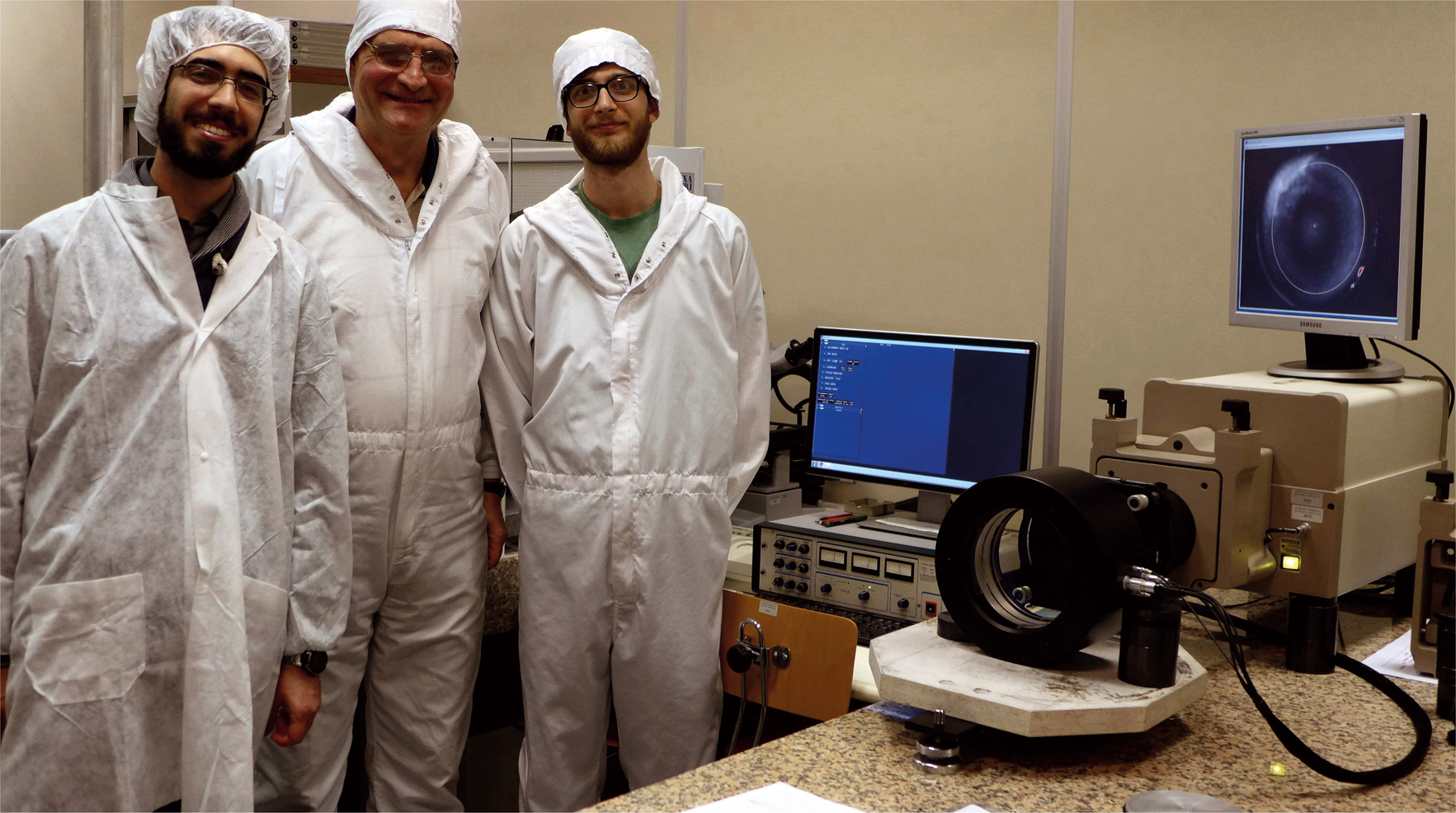
Fabry-Pérot interferometers (FPIs) are a crucial technological element of the European Solar Telescope focal plane instruments. Actually, the narrow-band tunable instruments of EST will be based on FPIs to achieve high spatial and spectral resolution images, with high cadence, together with unique polarimetric capabilities. FPIs are tunable narrow-band filters that make it possible to obtain nearly monochromatic images and can change very rapidly the wavelength.
An FPI is essentially an optical cavity and the spectral filtering properties depends on the nanometric control of the cavity distance. The large entrance pupil (4 m) of the future solar telescopes requires large interferometers (about 300 mm in diameter) for which the thermo-mechanical deformations of the plates become critical and could deteriorate the spectroscopic and imaging instrumental performances. For this reason, a detailed study was performed during FP7-SOLARNET to define the constraints in the use of large FPIs for the future solar instrumentation. That study was used to build the prototype of a large diameter FPI (150 mm). The prototype is stabilized via capacitive sensors and piezo actuators loop, i.e., it has a Capacitance Stabilized Etalon (CSE) configuration, and it includes a new geometry to reduce static and dynamical stresses on the optical surface.
The stability of the FPIs is crucial, and so it is the electronic control of the interferometer. A new controller was developed under the H2020-GREST project to further improve the capabilities of the FPIs using the most recent communication interfaces and a digital approach to the capacitance-stabilization. Furthermore, digital filtering of the control signal from the capacitive sensor can improve the stability of the optical cavity during observations.
H2020-SOLARNET is a great opportunity to further improve our development of the crucial technologies regarding FPIs for the European Solar Telescope. The goal is to design a Narrow-Band Tunable-Filter Imager for EST based on a tandem of capacitance-stabilised FPIs. This activity will address a broad range of key technical tasks, such as configurations trade-offs, analysis of the optical tolerances and stray light analysis.
